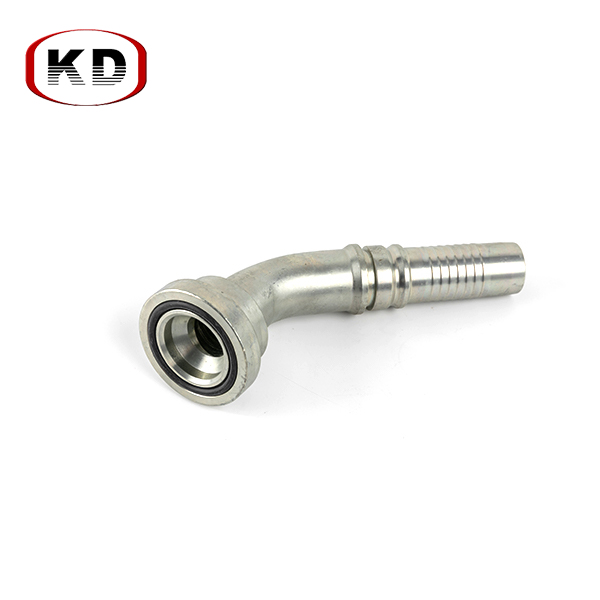Many years of foreign trade experience.
Strong production capacity, and massive stock to make sure the delivery time.
ISO quality process to make sure every piece qualifies.
One-to-one service, OEM service, provides alternative efficient solutions.

 By Admin
By Admin
Hydraulic nipples are engineered to establish and maintain leak-proof connections between hydraulic hoses, pipes, and various system components. They feature precision-machined threads and advanced sealing technologies, such as O-rings or metal-to-metal seals, which ensure a tight, reliable connection. This prevents hydraulic fluid from escaping, which is crucial for maintaining the system’s pressure and operational integrity. The secure connection helps avoid fluid losses, environmental contamination, and potential safety hazards caused by fluid leaks. Reducing leakage ensures that the hydraulic system operates efficiently, minimizing the risk of hydraulic fluid degradation and ensuring consistent performance.
Hydraulic nipples are designed to withstand the high-pressure conditions typical in hydraulic systems. Constructed from materials such as high-grade steel or stainless steel, these nipples are subjected to rigorous testing to ensure they can handle the maximum operating pressures specified by the system. The ability of a hydraulic nipple to maintain pressure integrity is essential for the stable operation of the entire hydraulic system. Failure to maintain the designated pressure can lead to system malfunctions, reduced efficiency, and potential safety risks, such as burst hoses or damaged components. Hydraulic nipples must be selected and installed based on their pressure ratings and the specific demands of the hydraulic system.
Hydraulic nipples play a critical role in the ease of assembly and maintenance of hydraulic systems. Their standardized design and threading allow for straightforward and quick connection of hoses and components. This standardization simplifies the assembly process, reducing the time and effort required to set up or reconfigure the hydraulic system. During maintenance, hydraulic nipples enable efficient disassembly and reassembly, minimizing downtime and facilitating prompt repairs. Efficient assembly and maintenance practices are essential for keeping the hydraulic system operational and reducing overall maintenance costs.
One of the primary functions of hydraulic nipples is to provide a secure seal that prevents the ingress of contaminants into the hydraulic fluid. Contaminants such as dust, dirt, water, or other foreign particles can significantly degrade the quality of the hydraulic fluid, leading to increased wear and tear on system components, reduced efficiency, and potential system failures. By maintaining a clean fluid environment, hydraulic nipples help ensure the longevity of hydraulic fluid and the optimal performance of hydraulic components. Effective contamination control is critical for minimizing maintenance requirements and ensuring the reliable operation of the hydraulic system.
Hydraulic nipples are available in a range of designs and configurations, including straight, 45-degree, and 90-degree angles, which enhances the flexibility and versatility of hydraulic system design. This variety allows engineers to tailor the hydraulic system layout to specific operational needs and spatial constraints, optimizing performance and efficiency. For instance, angled nipples can facilitate more complex routing in tight spaces or challenging installations, while straight nipples are ideal for direct connections. The ability to select the appropriate nipple configuration is crucial for achieving the best system design and ensuring seamless integration with other components.
SAE Flangs 6000 PSI Secure Fastening Highly Precise Interkock Fittings

SAE Flangs 6000 PSI Secure Fastening Highly Precise Interkock Fittings designed for 6000 PSI programs are usually engineered to withstand excessive-pressure environments, making them suitable for use in industries inclusive of hydraulics, oil and gas, and manufacturing. Secure fastening is important in these applications to make certain a leak-unfastened and reliable connection.